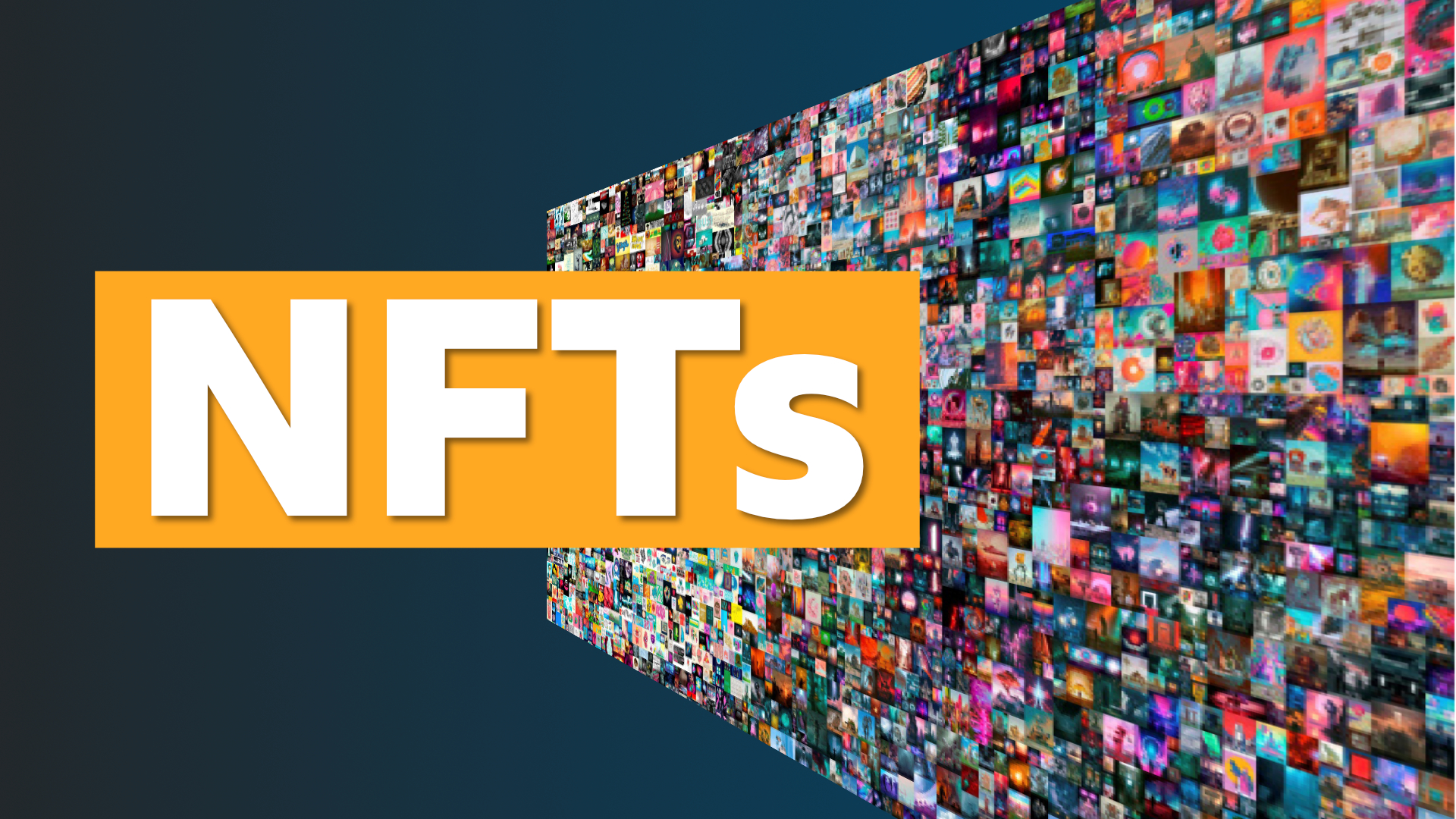Will traditional fine art be replaced by NFTs? has been a worry on the minds of many people working in the art industry and the art community given how NFTs have skyrocketed in popularity despite their short history.
In this article, we investigate this issue to find out how NFTs have helped artists, what changes they have brought for collectors, and how they are affecting art galleries.
Are you looking for the simplest and the most convenient way to acquire information regarding high-quality NFT Marketplace Development Services? If so, you’ll have to scroll down this article very deeply, as it’ll also enable you to investigate or find out how NFTs help artists, what changes they bring for collectors, and how they affect art galleries.
NFTs: New Forms of Technology?
NFTs are not a recent art form or media. The most popular type of art represented by non-fungible tokens is digital art, which predates NFTs by several years.
By establishing ownership and fostering scarcity, NFTs provide the item they are representing a value.
Each NFT maintains distinct information on a digital ledger that creates a transparent ownership proof on the blockchain network and makes it possible for anybody, at any time, to discover who the owner of a specific digital asset is.
What Artists Have Gained from NFTs
The biggest benefit and reward that NFTs have provided for artists is arguably the opening up of the art market, which has allowed digital artists to finally have a real value placed on their works.
Because NFTs are an open technology, they are widely accessible for artists regardless of their background, location, or following; providing them access to a worldwide audience in a more streamlined method than just the internet alone. NFTs have revolutionised both digital art and the fine art industry.
Anyone can create an NFT, exposing their work to the world of art, garnering recognition, and cultivating a following of admirers and collectors.
The traditional art market, in comparison, has various entry obstacles, including the need for vetting by specialists in the field before an artist is ever given the chance to be represented by a gallery.
The excitement surrounding NFTs in recent years has abruptly propelled several previously unknown artists to the forefront of the art world, yet only a very small portion of all active artists achieve global recognition and acclaim.
But it’s important to keep in mind that the industry-standard process of screening artists exists for a reason, and a key component of that reason is to decide whether a certain artist has the potential to become valuable and deserving of investment.
Therefore, even while the opportunity to avoid the established hierarchies of the art market can be appealing to artists, investors, collectors, and galleries looking for inventory should exercise caution when buying works of art from unproven and unknown creators.
Another benefit of NFTs for artists is the ability to hard-wire royalty payments into the smart contract underlying the NFT, entitle the artist to a portion of any subsequent sales of their NFT. After the first sale of their works, traditional artists typically don’t receive any royalties.
The Modifications NFTs Have Made For Collectors
Continuing from the preceding point, NFTs have given digital artworks a monetary worth and a rightful place at the art market table.
The arrival of a new generation of collectors who find the art market more accessible than it was previously is one of the largest shifts that NFTs have brought about. The concept of digital asset collection has also been presented to the older generations of conventional art collectors via NFTs.
We’re seeing an increasing number of the older generations create hybrid collections of conventional and digital art, in addition to this younger generation of collectors being introduced to the possibility of traditional art collecting that they may not have previously considered.
There will always be a demand for conventional art, which has always demonstrated to be a stable asset class, even though the bulk of the younger generations are most likely to lean more towards digital art collections due to the technologically dominated environment they’ve grown up in.
As a result of NFTs, a wide range of digital assets are now able to be purchased, sold, and exchanged in the same ways as conventional physical assets, giving collectors throughout the world another method to satisfy their collecting desires.
Given that we are surrounded by an increasing number of digital products like games, music, books, movies, and images in our daily lives, this makes perfect sense.
NFTs have increased the sorts of art that collectors can choose from, rather than displacing conventional art. Collectors can now own digital works of art that have the same potential for appreciation over time as traditional fine art.
New collectors now have the possibility to engage in the art market thanks to NFTs, whether they choose to collect traditional or digital art or both.
NFTs’ Impact on Art Galleries
Many galleries have had to review their business practices in light of the NFT surge and decide whether or not to participate in this brand-new area of the art market. Many renowned and well-established galleries are entering the NFT space, however others have erred on the side of caution.
We are witnessing an intriguing combination of these two aspects of the art industry as physical art galleries accept NFTs and exhibit them alongside traditional artworks. We are also observing how significantly the market has expanded now that digital art is valued.
Blockchain technology makes ownership of artworks indisputable and provides physical and virtual galleries with a trustworthy and secure tool to verify works of art and examine their provenance.
The same technology can be used to create secure digital documents that include the necessary information regarding conventional artworks, such as its history and record of ownership, instructions on the maintenance and presentation of the artwork, etc., without actually replacing the real piece.
Although NFTs have altered the environment and created a global market for digital artworks, the fundamental way that we consume and enjoy art hasn’t.
In the end, art is a bodily sensation that we humans appreciate. Regardless of whether the artwork is tangible or digital, we primarily consume and enjoy it by viewing it, and art galleries continue to be the ideal setting for the display of art.
This is only one example that demonstrates the preference we have for the materiality of art as the way we value it most. The majority of NFT art aficionados and collectors opt to exhibit their digital art collections, whether physically or online.
The arrival of the metaverse has opened up a whole world of digital possibility, with virtual galleries being launched by existing physical galleries as well as by others. This is in addition to a new audience visiting traditional galleries to watch the exhibited NFTs.
NFTs of conventional fine art works may likewise be exhibited in the metaverse, adding to the pool of virtual art galleries that are quickly taking over the art world.
As more galleries join in, we can be confident that this will cause the majority of galleries to have a hybrid inventory and to take advantage of both the physical and virtual worlds.
Also Read: White Labelling Versus Custom Marketplace Development. What Option Should You Pick?
NFTs: A Replacement for Fine Art?
The quick answer is no, yet it is undeniable that NFTs have fundamentally altered the realm of art.
With many of their advantages and qualities being utilised in harmony with traditional fine art, we may anticipate NFTs to remain and grow in prominence within the art sector.
Art has served as a medium of expression and recording for all of human history that has been written down, giving human lives cultural worth and meaning and serving as a crucial component of community and connection.
Digital art has been around for a very long time, but it has never been able to genuinely have value due to how easily it may be copied and the difficulty in establishing true ownership. The capacity to show uniqueness and rarity as well as ownership of digital artworks has been made possible by NFTs and blockchain technology, which has also given them worth.
It is possible to digitize almost any conventional artwork and represent it by a non-fungible token, but doing so will only improve the physical piece already in existence and never completely replace people’s propensity for making things out of actual matter.
What we can anticipate is a physical/virtual continuum as the NFT and traditional fine art worlds merge and expand together, creating a new landscape for the art market that combines the best of both worlds.
Combining the private and public benefits of conventional fine art while also providing additional benefits is something we’ve seen NFTs excel at.
We’ve seen briefly how NFTs can be used in conjunction with traditional art to great advantage for artists, collectors, and galleries. This successful fusion demonstrates unequivocally that NFTs will never completely replace traditional fine art, but they will constantly improve and enhance the market.


Comments are closed.